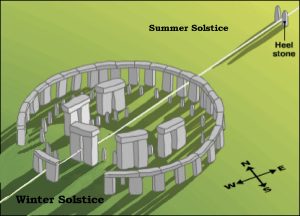Stonehenge Megalithic Structure: The Mystery of England’s Ancient Circle
The Stonehenge megalithic structure is one of the most famous ancient monuments in the world, standing on the Salisbury Plain in Wiltshire, England. Built around 3000–2000 BCE, Stonehenge continues to fascinate archaeologists, historians, and travelers. But why was this megalithic structure created, and how did Neolithic builders transport such enormous stones without modern tools?
What Is Stonehenge?
At first glance, Stonehenge appears to be a simple ring of stones. Yet this megalithic structure is far more complex. It consists of massive upright sarsen stones topped with horizontal lintels, smaller bluestones transported from Wales, and a surrounding circular earthwork. This level of planning shows that Stonehenge was no random arrangement, but a carefully designed monument.
Purpose of the Stonehenge Megalithic Structure
The true purpose of Stonehenge is still debated, but several main theories exist:
- Astronomical Observatory: Its precise alignment with solstices suggests it was used to track seasonal cycles.
- Ceremonial Site: Many believe Stonehenge was a sacred gathering place for rituals.
- Burial Ground: Excavations show cremated remains, pointing to elite burials.
- Healing Center: Some traditions connect the bluestones with spiritual healing powers.

Megalithic Engineering Marvel
The Stonehenge megalithic structure is an engineering puzzle. Some stones weigh up to 25 tons. Theories suggest ancient builders used sledges, rollers, and waterways to move them. Raising these stones into trilithons required ingenuity and community effort—proof that early societies possessed remarkable skills in megalithic construction.
Astronomical Alignments
Stonehenge’s alignments are among its most mysterious features. During the summer solstice, the sun rises directly above the Heel Stone. At the winter solstice, the sun sets in perfect alignment with the central axis. These astronomical markers turn Stonehenge into a cosmic calendar, connecting earth and sky.
Stonehenge Among Global Megalithic Structures
Stonehenge is not alone. Other megalithic structures such as the Carnac stones in France, passage tombs in Ireland, and Göbekli Tepe in Turkey share similar designs and purposes. These similarities raise questions: did ancient builders share knowledge, or did different cultures develop similar solutions independently?
For comparison, explore our article on Göbekli Tepe to see how another megalithic structure shaped early civilization.
The Legacy of Stonehenge
Today, the Stonehenge megalithic structure is a UNESCO World Heritage Site and a global symbol of ancient ingenuity. Thousands gather every year at solstices to celebrate traditions reaching back thousands of years. Stonehenge continues to inspire, reminding us of our ancestors’ quest to understand the universe.
Conclusion
Stonehenge is more than stones—it is a megalithic structure that connects humanity to its ancient past. Its precision, mystery, and spiritual significance make it one of the most enduring monuments in history.





